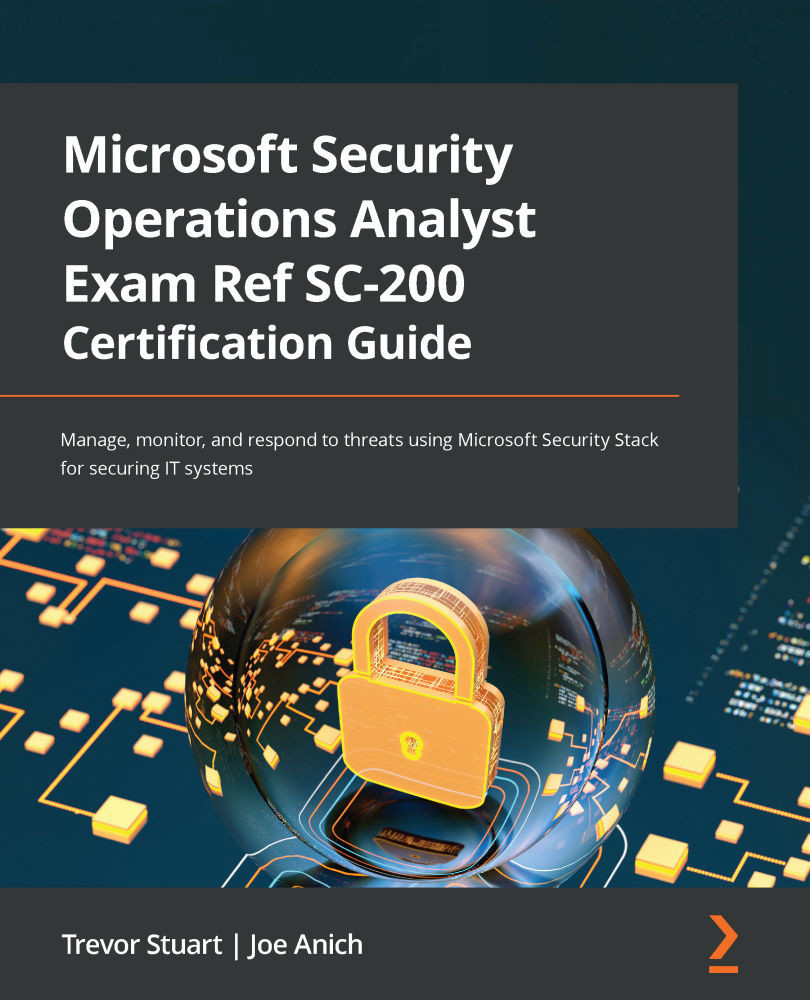Overview of this book
Security in information technology has always been a topic of discussion, one that comes with various backgrounds, tools, responsibilities, education, and change! The SC-200 exam comprises a wide range of topics that introduce Microsoft technologies and general operations for security analysts in enterprises. This book is a comprehensive guide that covers the usefulness and applicability of Microsoft Security Stack in the daily activities of an enterprise security operations analyst.
Starting with a quick overview of what it takes to prepare for the exam, you'll understand how to implement the learning in real-world scenarios. You'll learn to use Microsoft's security stack, including Microsoft 365 Defender, and Microsoft Sentinel, to detect, protect, and respond to adversary threats in your enterprise. This book will take you from legacy on-premises SOC and DFIR tools to leveraging all aspects of the M365 Defender suite as a modern replacement in a more effective and efficient way.
By the end of this book, you'll have learned how to plan, deploy, and operationalize Microsoft's security stack in your enterprise and gained the confidence to pass the SC-200 exam.



 Free Chapter
Free Chapter
